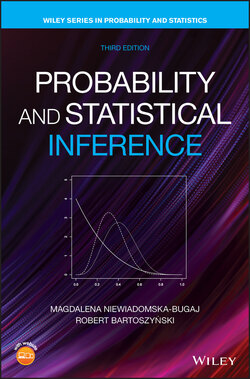Читать книгу Probability and Statistical Inference - Robert Bartoszynski - Страница 52
Solution 3
ОглавлениеThe location of the chord is uniquely determined by the location of its center (except when the center coincides with the center of the circle, which is an event with probability zero). For the chord to be longer than the side of the equilateral triangle inscribed in the circle, its center must fall somewhere inside the shaded circle in Figure 2.4. Again, by elementary calculations, we obtain probability .
Figure 2.4 Third solution of Bertrand's problem.
The discovery of Bertrand's paradox was one of the impulses that made researchers in probability and statistics acutely aware of the need to clarify the foundations of the theory, and ultimately led to the publication of Kolmogorov's book (1933). In the particular instance of the Bertrand “paradoxes,” they are explained simply by the fact that each of the solutions refers to a different sampling scheme: (1) choosing a point on the circumference and then choosing the angle between the chord and the tangent at the point selected, (2) choosing a diameter perpendicular to the chord and then selecting the point of intersection of the chord with this diameter, and (3) choosing a center of the chord. Random choice according to one of these schemes is not equivalent to a random choice according to the other two schemes.
To see why it is so, we will show that the first and second scheme are not equivalent. The analogous arguments for the other two possible pairs of schemes are left as an exercise.
Figure 2.5 Explanation of Bertrand's paradox.
